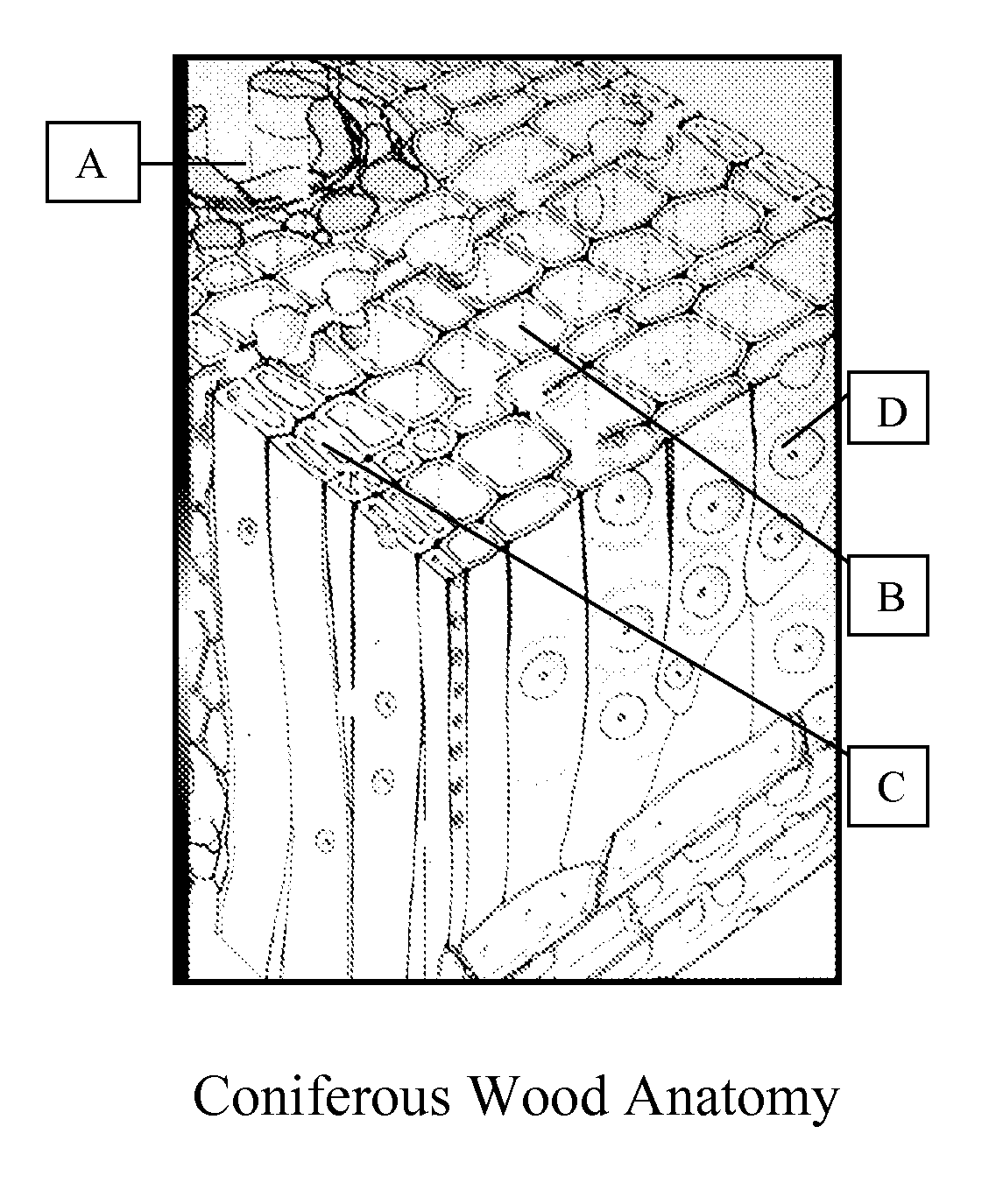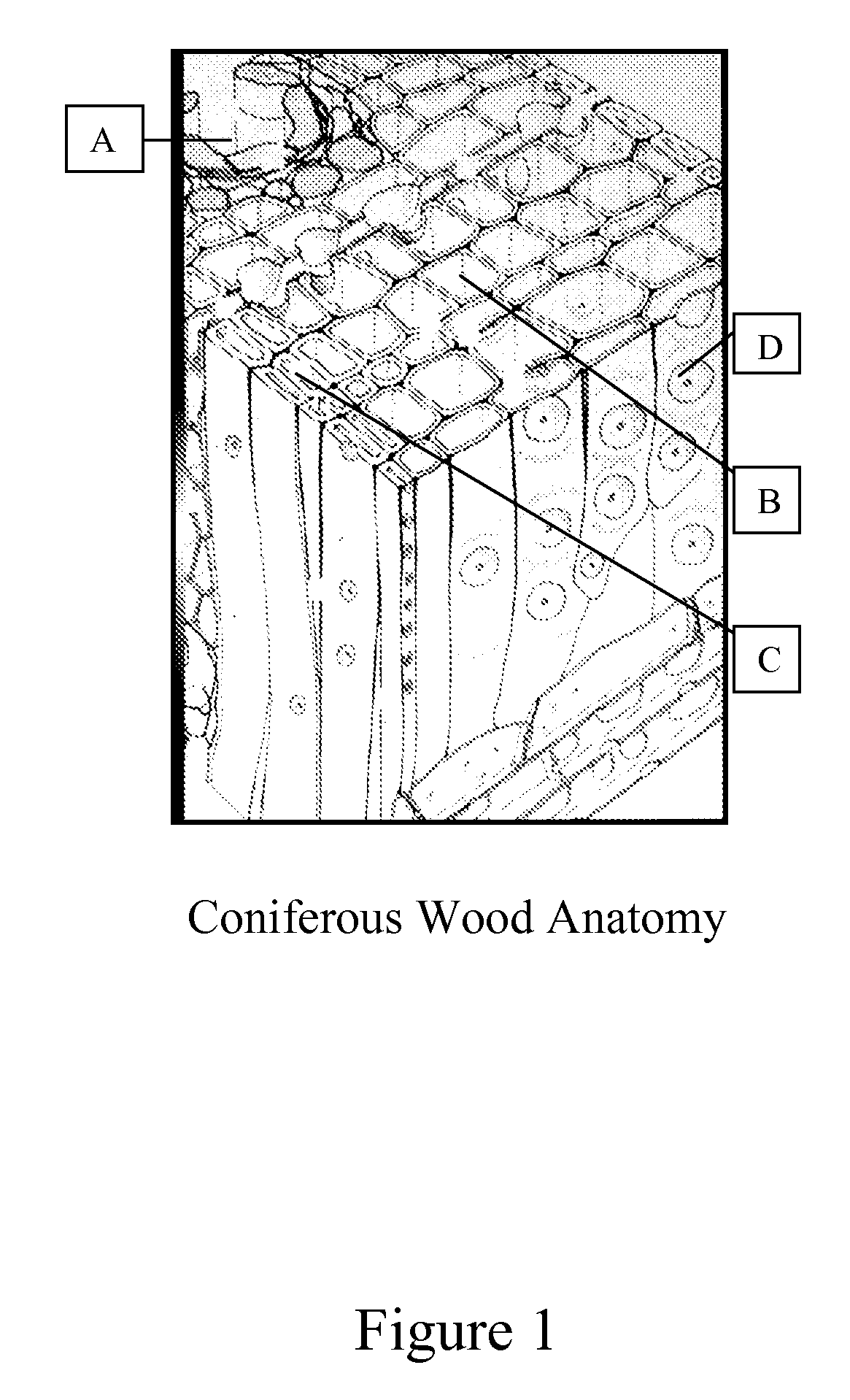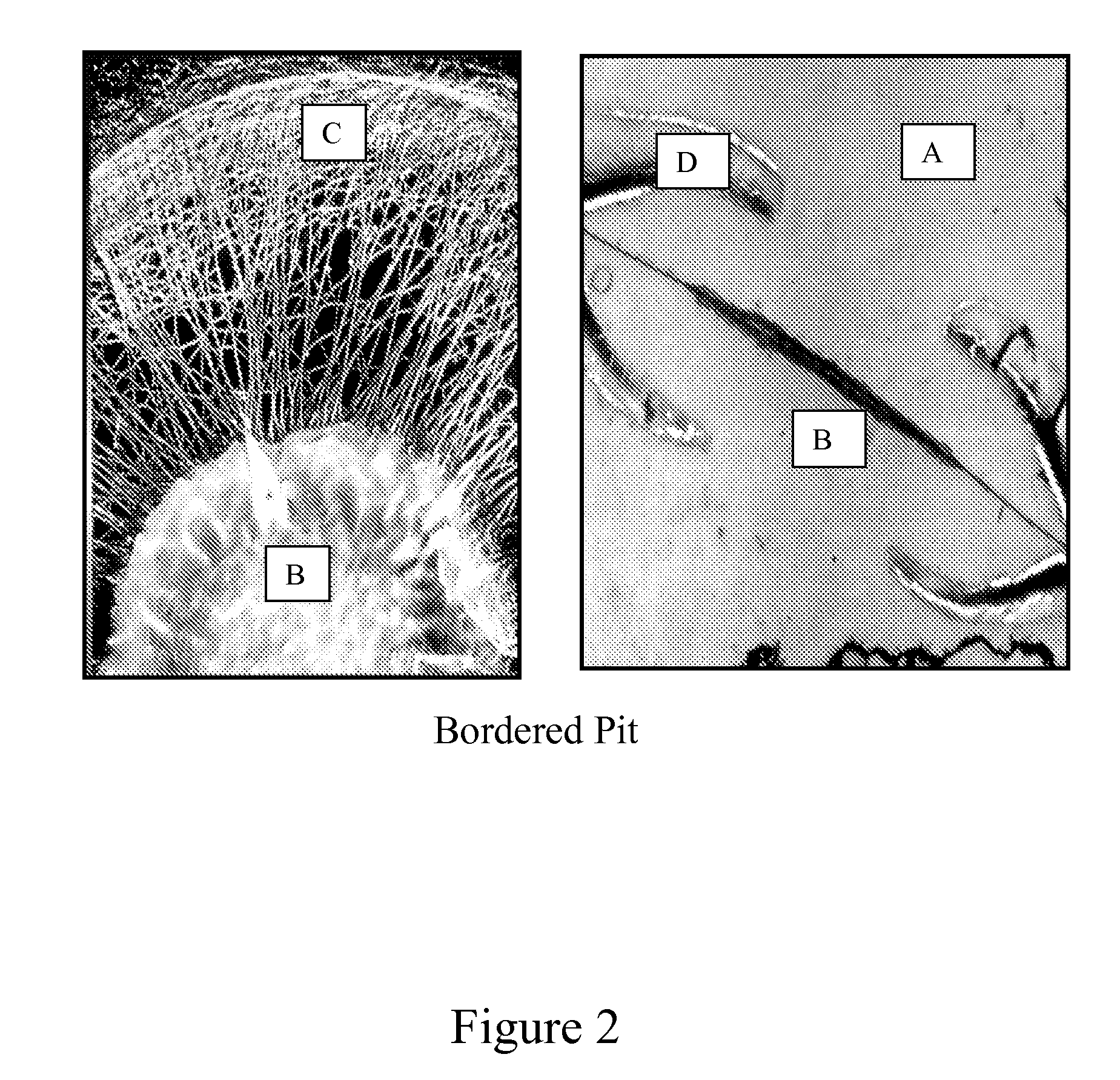Composition And Process For Coloring Wood
a technology of coloring process and wood, applied in the field of coloring process, can solve the problems of untreated wood, deterioration, yellowing, fading, etc., and achieve the effects of improving the outdoor weathering properties of wood, excellent UV resistance, and non-flaking color
- Summary
- Abstract
- Description
- Claims
- Application Information
AI Technical Summary
Benefits of technology
Problems solved by technology
Method used
Image
Examples
example 1
[0155] 1500 grams of red iron oxide, 500 g yellow iron oxide and 56 g carbon black were added to a container containing 1594.0 g of water and 350.0 g of a commercially available solution of polycarboxylate ether dispersant. The mixture was mechanically stirred for about 20 minutes and then added to a grinding mill. The sample was ground for about 2.0 hours and a stable dispersion was obtained. The particle size of the dispersed product was analyzed by Horiba LA-910 Particle Size Distribution Analyzer (PSDA). The average particle size was 0.21 microns with a distribution range of 0.04 um to 1.0 um.
example 2
[0156] 800 grams of red iron oxide, 200 g yellow iron oxide and 25 g carbon black were added to a container containing 795.0 g of water and 180 g of a modified poly carboxylic acid polymers dispersant. The mixture was mechanically stirred for about 20 minutes and then added to a grinding mill. The sample was ground for about 1.1 hours and a stable dispersion was obtained. The particle size of the dispersed product was analyzed by Horiba LA-910 Particle Size Distribution Analyzer (PSDA). The average particle size was 0.18 microns with a distribution range of 0.04 um to 1.5 um.
example 3
[0157] 750 grams of red iron oxide, 250 g yellow iron oxide and 50 g black iron oxide were added to a container containing 1270 g of water and 180 g of a modified polycarboxylate ether type of dispersant. The mixture was mechanically stirred for about 20 minutes and then added to a grinding mill. The sample was ground for about 1 hour and a stable dispersion is obtained. The particle size of the dispersed product was analyzed by Horiba LA-910 Particle Size Distribution Analyzer (PSDA). The average particle size was 0.25 microns with a distribution range of 0.005 um to 1.5 um.
PUM
| Property | Measurement | Unit |
|---|---|---|
| Fraction | aaaaa | aaaaa |
| Fraction | aaaaa | aaaaa |
| Fraction | aaaaa | aaaaa |
Abstract
Description
Claims
Application Information
 Login to View More
Login to View More - R&D
- Intellectual Property
- Life Sciences
- Materials
- Tech Scout
- Unparalleled Data Quality
- Higher Quality Content
- 60% Fewer Hallucinations
Browse by: Latest US Patents, China's latest patents, Technical Efficacy Thesaurus, Application Domain, Technology Topic, Popular Technical Reports.
© 2025 PatSnap. All rights reserved.Legal|Privacy policy|Modern Slavery Act Transparency Statement|Sitemap|About US| Contact US: help@patsnap.com



